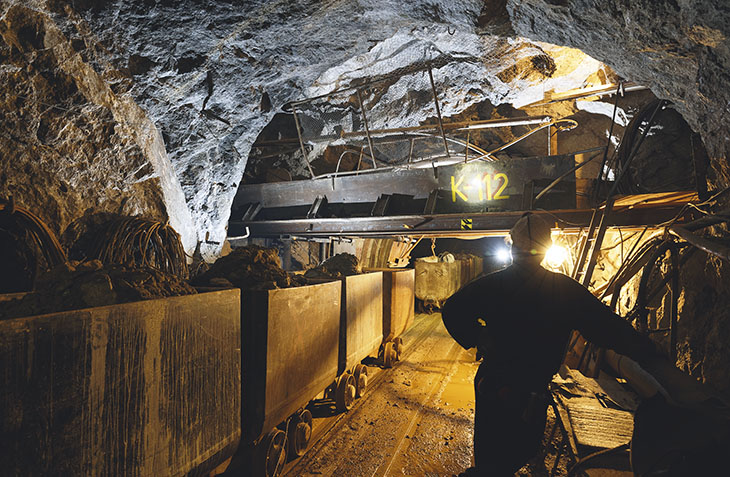Digitalization has changed the very nature of work, especially for employees. At the core of this revolution lies the empowerment of the workforce to thrive in an age headlined by AI and machine learning.
True digital transformation recognizes the importance of human creativity and decision-making in creating a more adaptive manufacturing environment. The goal is to leverage cognitive technologies to augment employees’ capabilities, not replace them.
Keeping Worker Empowerment at the Forefront of Digitalization
AI and automation technologies will replace roughly two million manufacturing jobs by 2025, so it’s a case of joining the bandwagon or falling behind. These advancements will not necessarily eliminate the need for human labor on the factory floor but rather transform the kind of workforce required.
However, most employees are resistant to change. According to research, mid-level managers and frontline workers put up the most resistance, stemming from a lack of awareness, fear of the unknown and absence of trust in the people making the adjustments.
That’s why the first step to empowering employees in a digital transformation is to communicate the vision and purpose of the process properly. People need to understand why digitalization is crucial to their work and how it aligns with the values and goals of the company.
More importantly, upper management must articulate its reasons for the change based on actual results, whether that’s improved safety, reduced downtimes or higher product quality. Workers are more likely to accept change when they understand its necessity.
Focused Training
The rapid rise of robotics and automation has resulted in more sophisticated machines capable of handling tasks previously done by humans. While these technologies can increase labor productivity, there is also an increasing demand for workers who can manage and maintain these systems.
Employee empowerment must therefore involve focused training on these aspects, providing the skill set needed to oversee digital operations on the factory floor and make data-driven decisions.
Technology vendors provide training on how to use their systems, but companies must tailor their approach based on the requirements of workers. It’s impractical to assume everyone learns the same way or needs to learn the same thing.
Involve and Engage
However advanced the technology, it’s the employees who will implement the digital solutions adopted by the company. Therefore, it’s important to involve and engage them in the transformation process rather than impose it on them. This means soliciting their input and ideas as they interact with the newly introduced systems.
There must also be room for collaborative involvement where employees can co-create and refine digital technologies to integrate them into existing manufacturing processes seamlessly. By engaging workers and valuing their insights, organizations can ensure higher adoption rates and foster a culture of innovation.
Adequate Learning and Development Opportunities
Empowering employees means providing them with the necessary learning opportunities to help them adapt and grow in their new roles. Interactive training programs, workshops and online resources can help enhance workers’ digital literacy and data analytics skills to become more proficient in their daily work.
Employers can also encourage increased social interaction to maintain human connection in digital transformation. This helps ensure a smoother transition and creates an avenue for open communication and collaboration across teams.
Recognition and Rewards
Motivation is vital in driving employee empowerment. Acknowledging employees' contributions to digital transformation and rewarding their active participation is crucial in improving motivation. Moreover, companies with recognition programs are 70% more likely to retain their workers, saving time and money on onboarding.
The key is to provide an equal opportunity for all workers to be rewarded for their efforts so everyone can earn recognition and the resulting benefits. These awards must be for a specific achievement or behavior during the digital transformation, so other team members feel incentivized to participate.
Workforce Transformation in Manufacturing
According to MIT, each robot added to the factory floor can replace 3.3 workers on average. While this raises concerns about job availability in the industry, digitalization can deliver advantages too compelling to ignore. For example, deploying robotic welding in manufacturing can lead to improved workplace safety, enhanced precision and higher-quality welds.
That’s why the focus must be on creating seamless partnerships between humans and machines on the shop floor.
Technology provides an opportunity for workers to move up the value chain and support the company in other areas of innovation. For instance, engineers can leverage big data to harness actionable insights they did not have access to before. The result is a higher-skilled workforce in a more agile and responsive manufacturing environment.
Challenges and Considerations
While digital transformation offers numerous benefits, it also presents challenges:
- Data integrity: As manufacturers adopt digital solutions, safeguarding sensitive data has become more paramount. Malware remains a huge issue, accounting for 37% of cyber incidents in the industry. Organizations must therefore implement robust security measures as part of the transformation process.
- Adoption complexities: Incorporating new technologies into existing systems can be time-consuming, resulting in work disruptions. Employers must develop well-defined integration strategies before introducing digital solutions in the workplace.
- Change management: Transformation must begin at the top. Management must receive adequate training on effective communication and support mechanisms to address resistance to change and ensure a smooth digital transition.
Empower Employees in Digital Transformation
Digitalization in manufacturing extends beyond adopting new technologies to also empowering workers so they feel more confident to do their jobs. It’s about changing the workplace culture to leverage the full potential of an amalgamation between humans and machines.
By building trust, providing focused training and involving employees in every step of the transformation process, organizations can empower teams to do meaningful work and produce intended results.


























